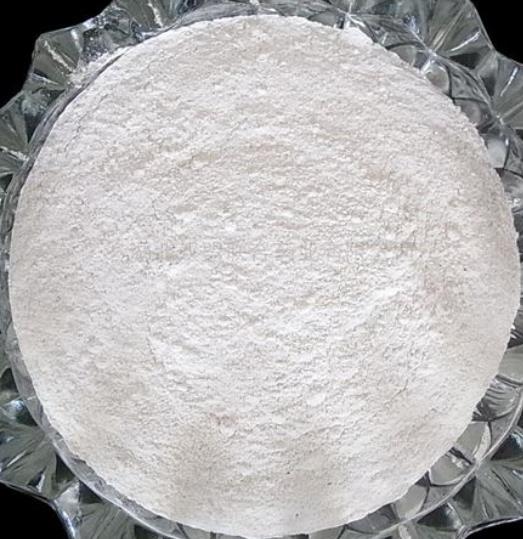Pyridinium p-Toluenesulfonate: Versatile Catalyst Driving Efficient Synthesis in Chemical Research
May 6,2024
General Description
Pyridinium p-toluenesulfonate, an organic salt, displays distinctive chemical attributes, featuring a pyridinium cation and a p-toluenesulfonate anion. Its solubility in polar solvents makes it valuable across various fields. As a catalyst, Pyridinium p-toluenesulfonate facilitates the synthesis of chiral macrocyclic aliphatic oligoimines and prostaglandin compounds. In the former, Pyridinium p-toluenesulfonate acts as a Lewis acid catalyst, promoting cyclization between reactants under mild conditions, yielding the desired product with high efficiency and selectivity. Furthermore, it aids in purification post-reaction. In the latter, it catalyzes the deprotection step, enhancing electrophilicity and enabling efficient conversion to prostaglandin compounds. Utilizing methanol as a solvent and operating at room temperature, it ensures high yields and purity. Overall, Pyridinium p-toluenesulfonate serves as a versatile catalyst, facilitating key synthetic processes in chemical research and industrial applications, owing to its stability, reactivity, and catalytic prowess.

Figure 1. Pyridinium p-Toluenesulfonate
Overview
Pyridinium p-toluenesulfonate is an organic salt with distinct chemical properties. It features a pyridinium cation, a nitrogen-containing aromatic ring, combined with a p-toluenesulfonate anion, a sulfonic acid derivative of toluene. Pyridinium p-toluenesulfonate exhibits good solubility in polar solvents and finds applications in various fields, including as a catalyst in organic synthesis and as an intermediate in the preparation of other chemicals. Its stability and reactivity make it a valuable tool in chemical research and industrial processes. 1
Applications as Catalysts
Synthesis of chiral macrocyclic aliphatic oligoimines
Pyridinium p-toluenesulfonate serves as a crucial catalyst in the synthesis of chiral macrocyclic aliphatic oligoimines derived from trans-1,2-diaminocyclohexane. In the described reaction, Pyridinium p-toluenesulfonate facilitates the formation of the desired product, 2-[[(1S,3R,4R)-4-Bromospiro[2.2]pent-1-yl]methoxy]tetrahydro-2H-pyran, with a high yield of 100%. The mechanism involves the activation of reactants by Pyridinium p-toluenesulfonate, promoting the cyclization reaction between bromospiropentylmethanol and 3,4-dihydro-2H-pyran. Pyridinium p-toluenesulfonate likely acts as a Lewis acid catalyst, facilitating the formation of the desired macrocyclic structure by promoting bond formation between reactive moieties in the reactants. This process occurs under mild conditions, with the reaction proceeding at ambient temperature over an 18-hour period. After the reaction, Pyridinium p-toluenesulfonate remains active in the system, aiding in the purification of the product. The solution is concentrated under reduced pressure, and the residue is further processed by column chromatography. PPTS may also play a role in maintaining the stability of the reaction intermediates and preventing undesired side reactions, thereby improving the selectivity and yield of the desired product. Overall, Pyridinium p-toluenesulfonate serves as an effective catalyst in this synthetic route, facilitating the formation of chiral macrocyclic aliphatic oligoimines with high efficiency and selectivity. 2
Preparation of prostaglandin compounds
Pyridinium p-toluenesulfonate serves as a catalyst in the preparation of prostaglandin compounds, particularly in the deprotection step. In this process, Pyridinium p-toluenesulfonate facilitates the conversion of reactant to prostaglandin compounds. When added to a solution of reactant in methanol at room temperature, Pyridinium p-toluenesulfonate accelerates the deprotection reaction. The reaction mixture is then heated at 40 °C overnight under nitrogen atmosphere. The mechanism of Pyridinium p-toluenesulfonate as a catalyst involves its ability to activate the deprotection reaction by providing a suitable environment for the reaction to occur. Pyridinium p-toluenesulfonate likely interacts with the substrate, enhancing the electrophilicity of the protecting group, thereby promoting its removal. This catalytic action of Pyridinium p-toluenesulfonate enables the reaction to proceed efficiently, leading to high yields of the desired product. Moreover, the use of methanol as the solvent further facilitates the reaction by providing a suitable medium for the reaction to take place. The conditions of room temperature and overnight heating allow for sufficient time for the reaction to reach completion. Overall, Pyridinium p-toluenesulfonate plays a crucial role as a catalyst in the deprotection step of prostaglandin compound synthesis, enabling the efficient conversion of reactant to prostaglandin compounds with high yield and purity. 3
Reference
1. Pyridinium p-toluenesulfonate. National Center for Biotechnology Information. 2024; PubChem Compound Summary for CID 466102.
2. Kwit M, Plutecka A, Rychlewska U, et al. Chiral macrocyclic aliphatic oligoimines derived from trans-1,2-diaminocyclohexane. Chemistry. 2007; 13(31): 8688-8695.
3. Old DW, Ngo VX. Preparation of prostaglandin compounds as ocular hypotensive agents. 2009; Patent Number: WO2009142967.
- Related articles
- Related Qustion
- Pyridinium p-Toluenesulfonate: properties, applications in organic synthesis and safety Aug 31, 2023
Pyridinium p-Toluenesulfonate is a white crystalline powder with versatile properties. It acts as a mild acid catalyst, facilitating various reactions. Safety precautions should be followed.
- Applications of Pyridinium p-Toluenesulfonate Nov 22, 2019
Pyridinium p-Toluenesulfonate has been extensively explored as an organic catalyst for promoting chemical transformations such as synthesis and cleavage of acetals,and deprotection of silyl or tetrahydropyranyl groups.
1,7-Dimethylxanthine is a naturally occurring alkaloid compound that can enhance alertness and reduce drowsiness.....
Feb 27,2025API(R)-DIFLUORPHOS(TM) This specialized ligand is gaining traction in academic and industrial settings due to its unique properties and versatile applications.....
May 6,2024APIPyridinium p-Toluenesulfonate
24057-28-1You may like
Pyridinium p-Toluenesulfonate manufacturers
- Pyridinium toluene-4-sulphonate (PPTS)
-

- $0.00 / 25kg
- 2025-03-31
- CAS:24057-28-1
- Min. Order: 1kg
- Purity: 99%
- Supply Ability: 100mt/year
- Pyridinium p-Toluenesulfonate
-
- $10.00 / 1KG
- 2025-03-31
- CAS:24057-28-1
- Min. Order: 1KG
- Purity: 99%
- Supply Ability: 10 mt
- Pyridinium p-Toluenesulfonate
-

- $0.00 / 1kg
- 2025-03-31
- CAS:24057-28-1
- Min. Order: 1kg
- Purity: 97%
- Supply Ability: 1000






